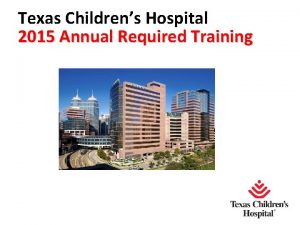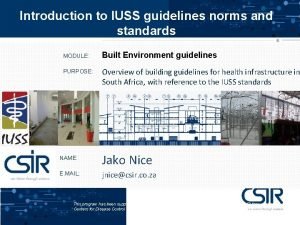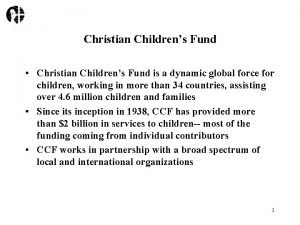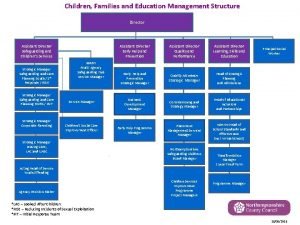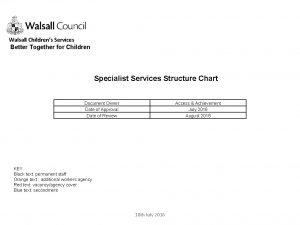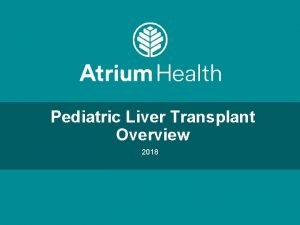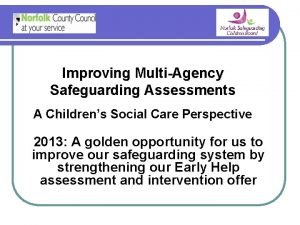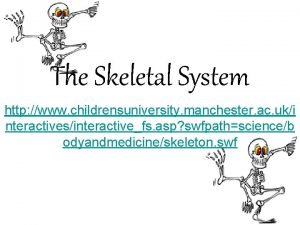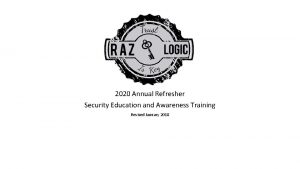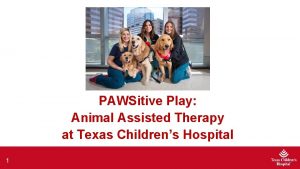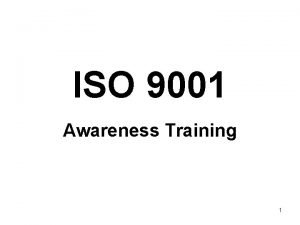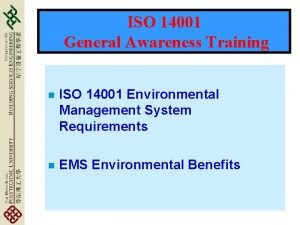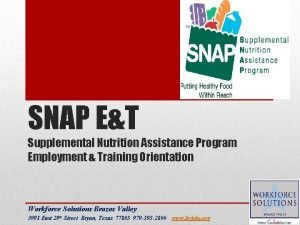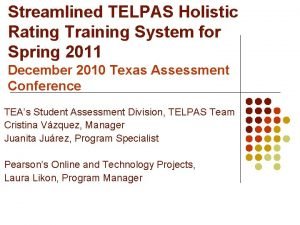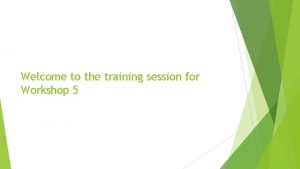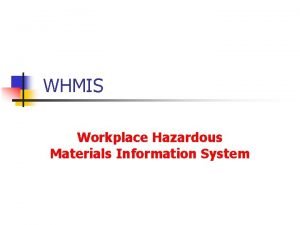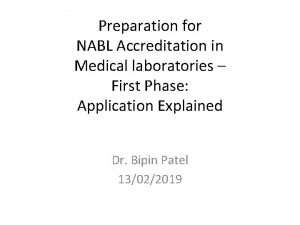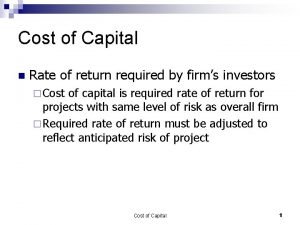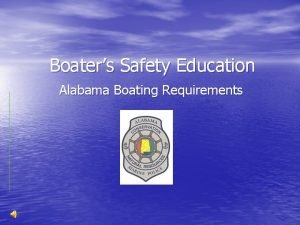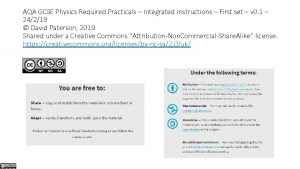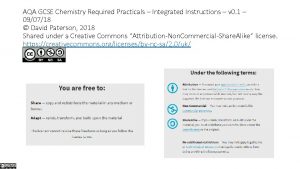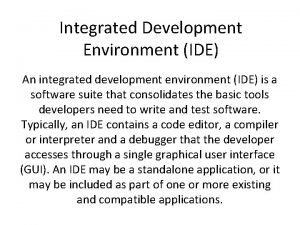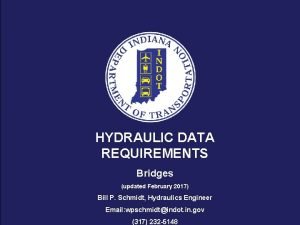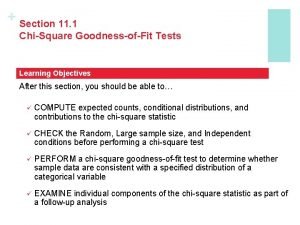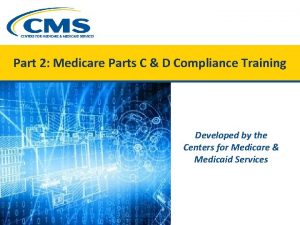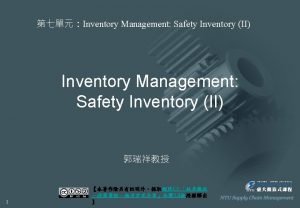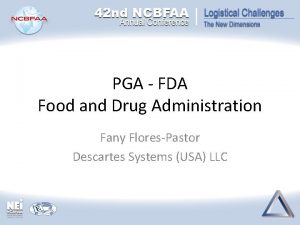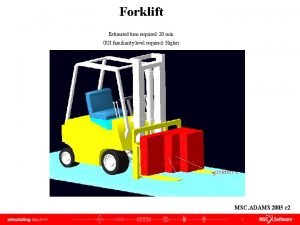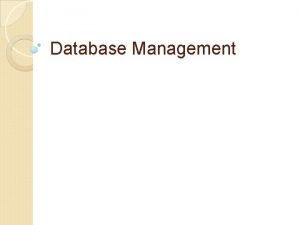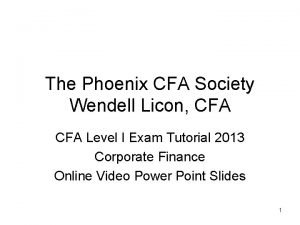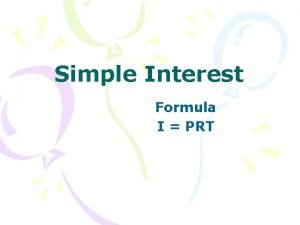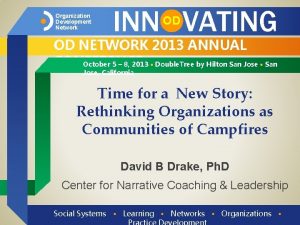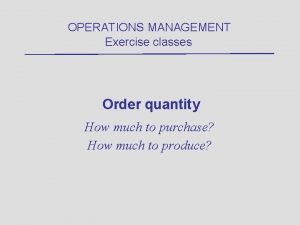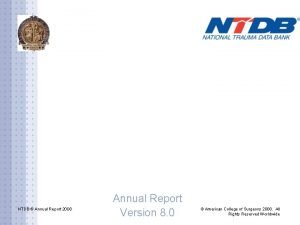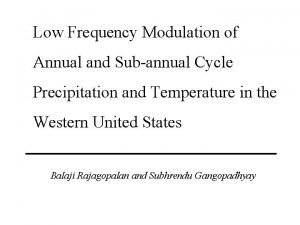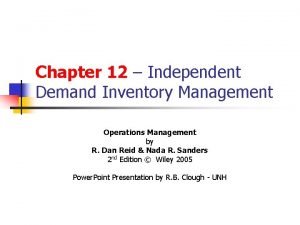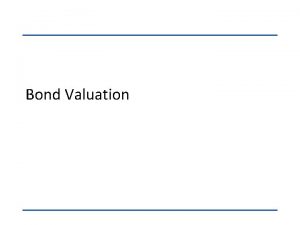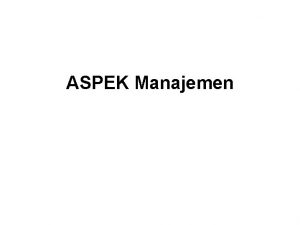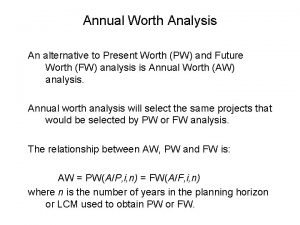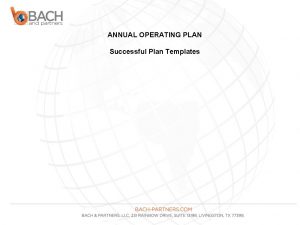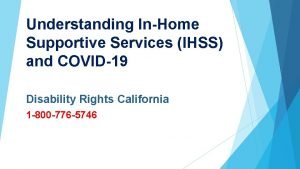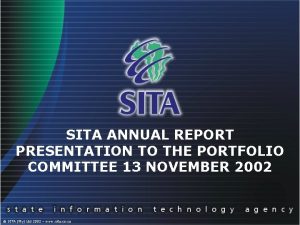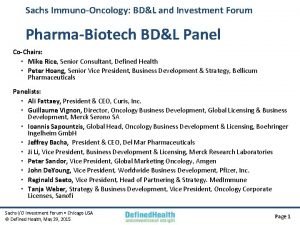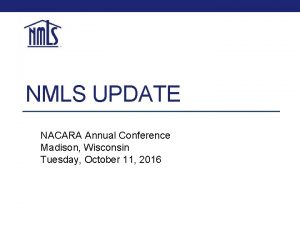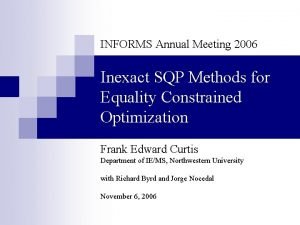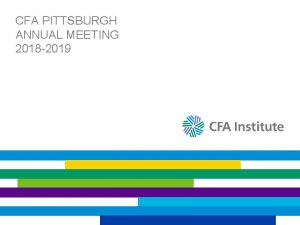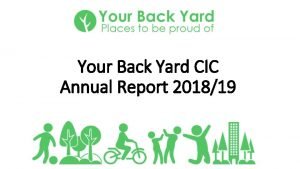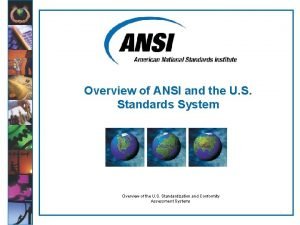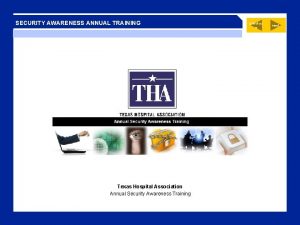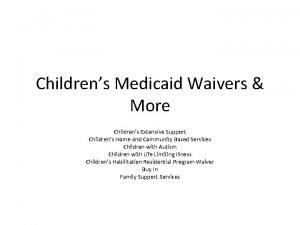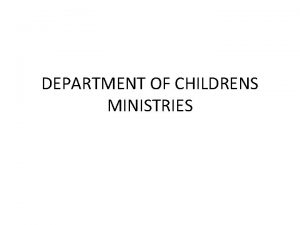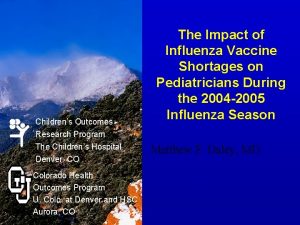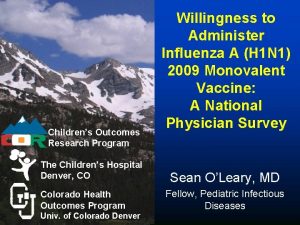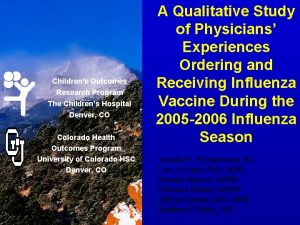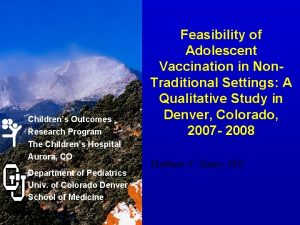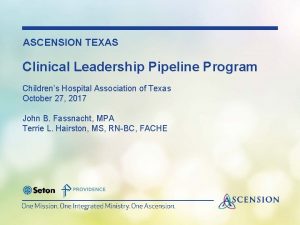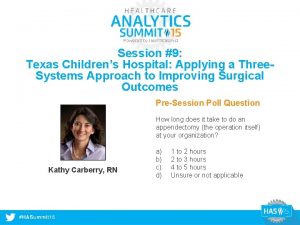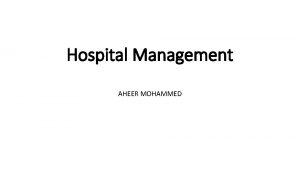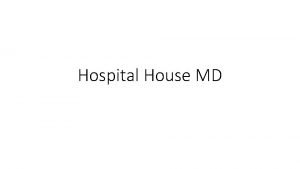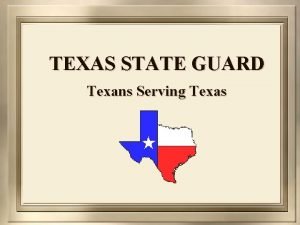Texas Childrens Hospital 2015 Annual Required Training Welcome


































































































































































- Slides: 162

Texas Children’s Hospital 2015 Annual Required Training

Welcome! Welcome to the Texas Children’s Hospital 2015 Annual Required Training course! This course will take approximately one hour to complete.

Course Navigation You may only use the NEXT button, as illustrated on this slide, to move forward through each of the slides. You must go through the slides in sequential order; however, you may use the PREV button to review previous slides already viewed. Back Forward

Who Is Exempt From This Course Ø Texas Children’s new employees (including Texas Children’s physicians) who were hired after January 1, 2015 are exempt. Ø Physicians, Residents, Fellows, Dentists, Podiatrists, and Licensed Ph. D. Psychologists not employed by Texas Children’s are exempt. All others not listed in either of the above categories must complete Annual Required Training.

Course Content This course consists of twelve modules. After reviewing all of the information in each of these modules, you must also complete the Acknowledgements section in Health. Stream to receive credit for completing 2015 Annual Required Training. Ø Ø Ø Compliance and Ethical Behavior Patient Privacy Information Security Fraud Awareness & Prevention Language Interpreter Services Diversity and Inclusion Ø Ø Ø Substance Abuse Patient Safety Quality Improvement Infection Control Emergency Response Environmental Health & Safety

Objectives As a result of this course, you will be able to: Ø Successfully meet the annual knowledge and safety review requirements of Joint Commission (JC), the Occupational Safety and Health Administration (OSHA), and Texas Children’s. Ø Respond appropriately to specific emergency and safety situations that may occur during the course of a work day or shift. Ø Maintain a safe and ethical work environment for everyone.

COMPLIANCE AND ETHICAL BEHAVIOR “Integrity at Work”

Doing What Is Right, Not What Is Easy Compliance and Ethical Behavior Texas Children’s develops and maintains an ethical and lawful environment in all aspects of its operations. The purpose of the Corporate Compliance program is to: Ø Support the mission and vision of Texas Children’s by ensuring compliance program effectiveness. Ø Monitor compliance and regulations. Ø Assist the organization in identifying and resolving issues. Ø Mitigate organizational risk. Lance Lightfoot Vice President & General Counsel Compliance & Privacy Officer

Your Role Compliance and Ethical Behavior Your role is to follow the organization’s Code of Ethical Behavior, including understanding your job responsibilities and learning to identify and report potential issues in your area. Everyone at Texas Children’s is responsible for compliance. We are committed to: Ø Following the law, ethical business practices, and Texas Children’s policies and procedures. Ø Avoiding conflicts of interest. Ø Reporting inappropriate or unethical conduct or activity. Ø Maintaining confidentiality. Ø Keeping accurate and complete records. Ø Doing what is right, not what is easy! Lance Lightfoot Vice President & General Counsel Compliance & Privacy Officer

Following The Law Compliance and Ethical Behavior There are many laws, regulations, and policies our organization must comply with including: Ø Organization-wide policies. Ø Entity specific policies. Ø Federal and state regulations, for example: Ø Fraud and abuse laws. Ø HIPAA and privacy laws. Ø Medicare/Medicaid coding and billing regulations. Ø Employment and labor laws. Lance Lightfoot Vice President & General Counsel Compliance & Privacy Officer

Texas Children’s Policies & Procedures On CONNECT Compliance and Ethical Behavior All Texas Children’s workforce members are expected to abide by established policies and procedures. These may be found on the Texas Children’s CONNECT intranet site under the Employee Resources heading.

Healthcare Fraud And Abuse Compliance and Ethical Behavior Healthcare expenses are under scrutiny from government agencies and private payers. There are civil and criminal penalties for organizations and individuals involved in fraudulent, wasteful, and abusive practices. Fraud is an intentional misrepresentation made to receive unauthorized payments or benefits. Some examples are: Ø Billing for services, procedures, and supplies that were not provided. Ø Falsifying information in a patient’s record. Ø Using another person’s insurance to receive benefits. Abuse is an overuse or misuse of services that are inconsistent with sound medical, business, or fiscal practices. Intent is not required. Some examples of healthcare abuse are: Ø A physician sees a patient more times than is medically necessary. Ø The use of more expensive supplies than is medically necessary. Ø Ordering lab work and tests that are not medically necessary.

Conflicts Of Interest Compliance and Ethical Behavior A conflict of interest occurs when workforce members have a personal or outside interest that may interfere with their Texas Children’s responsibilities. Common types of conflicts of interest are: Ø Self Dealing – using your official role to secure a personal or financial gain. Ø Family or Friend Dealing – using your official role to secure a personal or financial gain for a family member or a friend. Ø Outside Employment – holding a position that competes with, interferes with, or conflicts with your official role at Texas Children’s. Ø Gifts – gifts that have the potential to interfere with the recipient’s objective judgment.

Conflicts Of Interest (continued) Compliance and Ethical Behavior Texas Children’s workforce members must avoid taking part in any activity that may influence or appear to influence decisions they make on behalf of Texas Children’s. Appearances matter when it comes to conflicts of interest, so if you suspect there is a potential for a conflict of interest, you must disclose that to your leader or to the Compliance and Privacy Office. Texas Children’s Conflict of Interest Disclosure form is available on CONNECT through the Forms link.

Conflicts Of Interest – A Second Job Compliance and Ethical Behavior Many Texas Children’s workforce members have more than one place of employment. If you have a second job, it is important to maintain separate roles and not use your role at Texas Children’s to benefit your other workplace. For example: Ø Do NOT solicit Texas Children’s patients for another business. Ø Do NOT use Texas Children’s proprietary information for the benefit of another business. Ø Do NOT use network resources or access physical areas of Texas Children’s provided to you because of your work to benefit another business.

Gifts Compliance and Ethical Behavior All gifts must be scrutinized. Any gift that may interfere with your objective judgment must be declined. It is never appropriate to solicit or appear to solicit gifts. Cash (including tips and gratuities) and cash equivalents (such as gift cards and gift Cash equivalents certificates) are always prohibited regardless of whether they are from a patient, patient family, or vendor.

Gifts (continued) Compliance and Ethical Behavior Thank you cards and notes from patients and their families may be accepted, but any enclosed cash or cash equivalents, regardless of value, must be declined and returned. Even a $5 Starbucks card is prohibited. Small, token gifts from a patient or patient family (for example, a box of doughnuts, candy, or a small flower arrangement) may be accepted, but should be shared with everyone involved in the patient’s care, to the extent possible. If a family wishes to recognize Texas Children’s with a donation, they should be directed to the Office of Development.

Gifts From Vendors Compliance and Ethical Behavior It is important to remember that gifts from vendors currently involved in any stage of the bidding process (RFP, RFI, or RFQ) with any Texas Children’s entity must be declined. Vendors, or even potential vendors, may not pay for travel expenses, and may not sponsor or provide items for departmental parties, such as funds, gift cards, gift certificates, or raffle prizes. There a few exceptions made for certain activities.

Vendor Management Compliance and Ethical Behavior All vendors must be registered with Vendor. Mate to conduct business with Texas Children’s. Ø Any person working on-campus must have either a Texas Children’s badge or an appointment-specific badge sticker label indicating that they are an approved vendor with a pre-scheduled appointment. Ø New or unknown vendors should contact Supply Chain Services at 832 -824 -2122 to register prior to their visit.

Vendor Management – Kiosk Locations Compliance and Ethical Behavior If you see a vendor without the appropriate identification, ask them if they have an appointment and direct them to a kiosk location to obtain a pre-scheduled appointment badge. Kiosk Locations: Ø Clinical Care lobby Ø Meyer Building lobby Ø Feigin Center lobby Ø West Tower Operating Room 3 rd floor suite Ø Pavilion for Women lobby and 3 rd floor reception area Ø West Campus lobby

TCH Badges Compliance and Ethical Behavior Please review and become familiar with the samples on this slide of the types of Texas Children’s badges you will see across the organization.

Maintaining Confidentiality Compliance and Ethical Behavior Ensuring the confidentiality of Texas Children’s records, including our patient’s protected health information, is a responsibility of all workforce members. We must take all appropriate measures to safeguard all confidential information. If you are aware of a situation in which Texas Children’s confidential information has been or is in jeopardy of being inappropriately accessed, used, or disclosed, then you must report your concern.

Reporting Concerns Compliance and Ethical Behavior You are our organizations eyes and ears. You must report any potential violations of ethical business standards, policies, or laws. You can make reports to your leader or any other leader in the organization. If you are not satisfied with the outcome or do not feel comfortable reporting your concern to a leader, contact the Compliance and Privacy Office or call the Confidential Hotline. Whistle-blowers are protected from retaliation by Federal and State laws, as well as Texas Children’s policies. No workforce member making a report in good faith will be punished for making the report, no will retaliation be tolerated. If you feel you have been retaliated against, you can report that concern to the Compliance and Privacy Office.

Contact Information Compliance and Ethical Behavior Compliance and Privacy Office 832 -824 -2085 Email “Compliance Office” Confidential Hotline 866 -478 -9070 www. mycompliancereport. com (access code: TEX) Lance Lightfoot Vice President & General Counsel Compliance & Privacy Officer

PATIENT PRIVACY “Their Right, Our Duty”

Privacy and Security Starts With You Patient Privacy Everyone working at Texas Children’s has a duty to safeguard the protected health information (PHI) of all of our patients. Our patients trust us with their confidential information. We must do everything we can to protect their right to privacy. If you are aware that PHI has not been properly secured, you have a duty to take immediate action to safeguard the information. Texas Children’s “Notice of Privacy Practices” is displayed throughout the campus and is provided to every patient during their initial contact with Texas Children’s. It serves to document our commitment to protecting our patient’s PHI. A copy of the notice must be provided to patients upon request.

Protected Health Information (PHI) Examples Patient Privacy Identifying Information Contact Information Medical Record Information Insurance Information • Name • Medical Record Number (MRN) • Social Security Number (SSN) • Date of Birth • Address • Phone Number • Email Address • Social History • Diagnosis and Treatment Information • Dates of Service • Full Facial or Comparable Photographic Image • Health Insurance Beneficiary Number Any document or item that contains any of the listed identifiers above is considered PHI. The majority of confidential information handled at Texas Children’s is PHI. YOU are the most important safeguard of our patient’s PHI!

Patient Privacy Violations In The News Patient Privacy Ø Blue Cross Blue Shield Tennessee agreed to pay a $1. 5 million settlement after 59 unencrypted hard drives with data belonging to more than one million individuals were stolen from one of their facilities. Ø A password protected but unencrypted desktop computer was stolen from a Sutter Health Facility. The computer contained PHI for four million patients. A class action lawsuit totaling $1 billion was filed as a result of this breach.

Mobile Devices Patient Privacy Be vigilant about your use of mobile devices. These devices are often stolen or lost and a large volume of data can be stored on these devices. Examples of mobile devices include: laptops, desktop computers, USB flash drives, cell phones, cameras, and video cameras. Do not store documents on a mobile device unless it is password protected and encrypted. Use secure network drives to store documents that contain any element of PHI. Generally, PHI should not be stored on unencrypted devices. If there is a situation where an unencrypted device, for example a digital camera, must be used to store PHI, the device must be physically secured, for example in a safe or locked in a storage cabinet.

Access, Use, And Disclosure Patient Privacy Without written authorization, Texas Children’s may only access, use, and disclose PHI for: Ø Treatment - such as continuity of care, referral authorizations, and quality review. Ø Payment - such as to receive payment for services. Ø Operations - to perform business functions. It is wrong to access a patient’s PHI unless it is directly related to your official, assigned job duty. In fact, it is a crime! Texas Children’s may terminate employees found to have inappropriately accessed patient information.

Access, Use, And Disclosure (continued) Patient Privacy Keep in mind that you may not use your system access, for example EPIC or People. Soft, for activities that are not directly related to your official assigned duties. Every click within the EPIC system is traceable and the Privacy Office routinely audits records to make sure access to PHI is appropriate. Here are some things to remember: Ø Do NOT access the records of patients that appear in news stories or television programs. Ø Do NOT access your own records, except for those in MOLI and My Chart. Ø Do NOT access the records of your children, relatives, friends, neighbors, former patients, or co-workers. Ø Do NOT click on a patient’s name from the census of a different unit or another Texas Children’s entity.

Privacy Measures – Sensitive Discussions Patient Privacy When you have a sensitive discussion which may contain PHI, keep the following points in mind: Ø Evaluate your surroundings for privacy. Ø Keep your voice down. Ø Verify identities before releasing information, including during phone calls. Ø Verify at least three patient demographic elements, such as name, address, and date of birth.

Privacy Measures – Using Computers Patient Privacy Adhere to proper privacy policies and practices by: Ø Locking or logging-off workstations. Ø Not sharing your password with anyone. Ø Physically securing laptops and other mobile devices. Ø Storing documents containing PHI on network drives, and only on mobile devices when absolutely necessary. Ø Only using your Texas Children’s email for work related business. Ø Using Securemail when sending emails that contain confidential information outside of the Texas Children’s or Baylor College of Medicine networks. Ø Using the Rights Management Systems to control confidential emails that you might send to others within Texas Children’s.

Privacy Measures – Handling Documents Patient Privacy Ø When handling documents that contain PHI, be sure to secure all materials. Do not leave PHI in non-secure areas. Be sure to promptly remove documents from copiers or fax machines. Ø When sending documents containing PHI by mail, email, or fax, be sure to verify names, addresses, and fax numbers before sending the documents.

Privacy Measures – Document Disposal Patient Privacy Ø When you dispose of documents with confidential information, do not dispose in a regular trash can or recycling bin. There are locked shredding bins provided throughout Texas Children’s for disposal of paper products. Ø If you need to dispose of non-paper media, such as a CD, tape, or USB flash drive, contact Records Management at 832 -824 -2054.

Privacy Measures – Patient Photography Patient Privacy Ø Patient images require the same policy safeguards as other elements of a patient’s medical records. Texas Children’s Consent for Treatment authorizes photographs and files related to the care and treatment of the patient. Ø Photographs used for treatment purposes must be included in the patient’s medical records. Any photograph for any other official purpose, for example for marketing purposes, requires a separate authorization. There are no other means for obtaining consent for photography. Ø Workforce members are prohibited from taking photographs of patients for their own personal use and may not take photographs of patients on their personal mobile phones or cameras. Ø Remember, cameras and video cameras used to take official photographs must be properly secured at all times. Digital files must be removed promptly from unencrypted devices and stored securely.

Privacy Measures – Social Media Patient Privacy Social media refers to online interactive tools that enable individuals and organizations to publish, access, and share information electronically. Examples include: Ø Facebook Ø Linked. In Ø My. Space Ø Twitter Ø You. Tube Ø Blogs Ø Photo sharing services Ø Discussion boards

Privacy Measures – Social Media (continued) Patient Privacy Ø It is not appropriate to use Texas Children’s resources, for example computers or internet connections, for personal social media activity, nor is it appropriate to let social media interfere with work commitments and responsibilities. Ø Patient information, including photographs, should not be posted on a workforce member’s personal social media sites, for example on Facebook. Ø It is not appropriate to use personal communication devices, for example a cell phone, in the vicinity of or within sight of patients. You should limit your use of these devices during working hours; you may use them when you are away from patient care areas, for example during a break time.

Breach Event Reporting Form Patient Privacy Texas Children’s has created a CONNECT Breach Event Reporting Form that workforce members should use to report any instance in which PHI is misdirected, lost, stolen, or otherwise inappropriately acquired, accessed, disclosed, or used. This includes: Ø Unauthorized acquisition, access, disclosed, or use of protected health information. For example: Inappropriate access (without a legitimate work purpose) of patient records in Texas Children’s electronic medical record system. As soon as you become aware of a potential privacy breach, you must take steps to mitigate the breach. If there has been a breach and you are unsure what to do, contact your leader or the Privacy Office.

Breach Event Reporting Form (continued) Patient Privacy Examples of accidental disclosures of protected health information you should report are: Ø Mail that has been sent to the wrong address. Ø Faxes that have been sent to the wrong fax number. Ø Email sent to the wrong recipients. Ø Other documentation mix-ups (for example, handing documents intended for one patient to another patient). Ø Lost hardcopies of documents containing patient identifiable information (name, MRN, DOB, etc. ). Ø Stolen or lost information assets containing protected health information (laptops, desktops, USB storage drives, external hard drives, etc. ).

Report Privacy Concerns Patient Privacy Your compliance with established policies mitigates the organization’s risk for privacy incidents. When workforce members violate our patients’ privacy it can: Ø Disrupt patient care. Ø Create negative publicity for our organization. Ø Create a negative patient perception. Ø Open the door to identity theft of patient information. Ø Have civil and criminal penalties for individual workforce members and for the organization. Ø Cause disciplinary action to be taken against a workforce member, including termination, as noted in the “Investigation of Privacy Violations Sanctions Policy”.

Report Privacy Concerns (continued) Patient Privacy Texas Children’s is required by law to take action when privacy rules are broken. Some examples of how we may treat privacy breaches are by: Ø Verbal counseling - a discussion with you and your leader. This is usually a warning. Ø Written counseling - a formal document placed in your personnel file. Ø Suspension from work - the workforce member is not allowed to work for a period of time, with or without pay. Ø Termination. If you are aware of any privacy issues, you should report them. You may also report any concerns you may have about the physical security of your work area or about the security of the network, a system, or a computing device. Take a moment and review the chart on the next slide for contact information when reporting concerns.

Report Privacy Concerns (continued) Patient Privacy Concern Contact Information General Privacy Concern Privacy Office 832 -824 -2091 Confidential Hotline 866 -478 -9070 Security of a Network, System, or Computing Device IS Service Desk 832 -824 -3512 Physical Security of Work Area Security Services 832 -824 -5400

INFORMATION SECURITY “Protecting Our System”

Information Security Policies Information Security Texas Children’s must comply with many laws and regulations regarding the security of confidential and proprietary information. These include: Ø Health Insurance Portability and Accountability Act of 1996 (HIPAA). Ø Joint Commission. Ø Payment Card Industry Data Security Standard. Ø Many others.

Information Security Policies (continued) Information Security We have in place several policies related to information security. Everyone is required to sign and attest to the guidelines in the Information Security Awareness Agreement as a condition of employment. On the next few slides we will review the two policies in bold. Policy Name Acceptable Use of Information Assets Policy Electronic Mail Policy Password Policy Disposal of Confidential and Proprietary Information Policy Handling of Confidential and Proprietary Information Policy Employee Conduct Policy Termination Policy

Acceptable Use of Information Assets Information Security Texas Children’s provides all employees with the resources to perform their job, including individual user accounts, email addresses, access to workstations, and the system network. The “Acceptable Use of Information Assets Policy” describes the proper use of and access to Texas Children’s computers, information systems and network resources, and the proper management of these resources by authorized users. You are responsible for any activity performed under your individual user account. Information assets, such as computers, email, and network access are intended for business use and may be monitored and reviewed anytime by authorized personnel.

User Passwords Information Security Passwords play an important role in securing sensitive, proprietary, or otherwise protected information. The “Passwords Policy” outlines requirements for creating strong passwords that provide enhanced security and restrict unauthorized access to information. Password requirements are as follows: Ø Must be at least eight characters long. Ø Must change every 90 days, or immediately if breached. Ø Must contain at least three of the following character types: Ø English uppercase characters (A-Z). Ø English lowercase characters (a-z). Ø Base 10 digits (0 -9). Ø Non-alphanumeric characters (!, $, #, %).

User Passwords (continued) Information Security Never share passwords with anyone! Ø No one at Texas Children’s will ever request your password either verbally or through email. Ø Remember, each Texas Children’s user remains personally responsible for the usage under his or her user ID and password.

Email Security - Securemail Information Security Email to external recipients containing confidential information, including PHI, must be sent using Texas Children’s Securemail. To send a message securely through Outlook, Outlook Web Access, or a mobile phone, type the following in the subject line of the email: an exclamation point, then the word secure, and then another exclamation point (!secure!), and then send your email as you normally would. The system will encrypt the message automatically. The user will receive a notification on how to access the confidential information. The next slide shows you an example of what a Securemail would look like.

Email Security – Securemail (continued) Information Security To view complete instructions regarding how to use Securemail go to the TCH CONNECT intranet site, then search “securemail”.

Email Security - Phishing Information Security You also need to be wary of email that comes from sources you do not recognize. If you receive a Phishing email, please delete it immediately. Phishing is a type of spam in which someone fraudulently attempts to acquire sensitive information such as user names, passwords, or credit card information via email. Usually the email will appear to come from a trustworthy source like a credit card company or a bank. If you are not sure about a suspicious email, contact the IS Service Desk at 832 -824 -3512 to confirm. Be cautious about opening attachments within an email message. Phishers or hackers commonly use attachments in an attempt to compromise Texas Children’s network. Open attachments only from known and trusted sources.

Internet Usage Information Security You may see certain notifications pages when you attempt to visit certain websites. Ø Human Resources Notice - displays when the site you are attempting to visit is not considered to be a legitimate business site. If the site has genuine business value, and you still want to access it, click on the “continue to site” link. Ø Blocked Website Notice – displays when you attempt to visit a site that is blocked by Texas Children’s policy, you will see a Blocked Category notification page. You will not be able to access this site, but you may request that this site become unblocked if you believe that you have received the message in error or that the site should not be restricted. Ø Uncategorized Website Notice – displays when you are attempting to visit a site that is uncategorized and may pose a security risk. Be cautious about clicking the “continue” link to access these types of sites.

Other Security Safeguards Information Security Ø Never download software from any outside source. All software must be installed through the Information Services Department. This is to protect Texas Children’s from viruses and to ensure compliance with software licensing agreements. Ø Texas Children’s information should not be stored on any type of personal mobile device or portable storage device, such as a Flash drive, as these can easily be lost or stolen. Flash drives can also introduce viruses to our network. If there is a special business need for storing information on a storage device, the device must be encrypted or stored securely.

Reporting Information Security Incidents Information Security It is important for all workforce members to report information security incidents. Information security incidents include but are not limited to: Ø A lost or stolen workstation or laptop. Ø A stolen user password. Ø Suspicious email such as phishing, etc. If you need to report a lost or stolen workstation or laptop: Ø First inform your supervisor or manager immediately. Ø Then notify the Security Service Center at 832 -824 -5488. Ø Finally contact the Information Services Service Desk at 832 -824 -3512.

FRAUD AWARENESS & PREVENTION “Protecting Our System”

The Fraud Triangle Fraud Awareness & Prevention Fraud is the deliberate deception to secure unfair or unlawful gain. There are three circumstances that lead to fraud, which are known as the fraud triangle: 1. The incentive to commit fraud. 2. The opportunity to carry out the fraudulent act. 3. The ability to rationalize or justify the fraud.

Examples Of Fraud Awareness & Prevention Asset Misappropriation • Theft • Payroll fraud – falsifying overtime, “buddy” clocking for someone else • False or padded expense reimbursements • False invoicing • Upcoding of medical charges for services not performed Corruption • Bribes • Accepting illegal gratuities • Engaging in conflicts of interest • Extorting illegal payments from third parties Financial Statement Fraud • Intentional misstatement or omission of material information from financial reports

Fraud Warning Signs Fraud Awareness & Prevention Warning signs include: • Odd or irregular transactions • Missing or altered documents • Lack of adequate supporting documentation for transactions • Missing or unverified inventory or physical assets • No reconciliation or unexplained reconciliation of items • Shortages in cash on hand • Abnormal expenditures for external services • Unauthorized changes to employee time worked

Your Responsibilities Fraud Awareness & Prevention The minimization of fraud, waste, and abuse is EVERY employee’s responsibility. Leaders should: • Ensure the appropriateness of all requests including from established vendors, check requests, and expense authorizations • Frequently review financial information for validity and accuracy • Encourage an effective internal control environment • Convey the importance of the Code of Ethical Behavior to all team members • Be a role model and lead by example All employees should report: • Illegal, fraudulent, or suspicious activity • Financial misstatements • Accounting or auditing irregularities • Conflicts of interest, dishonest or unethical conduct • Violations of the Code of Ethical Behavior • Violations of other laws, rules, or regulations

Your Responsibilities (continued) Fraud Awareness & Prevention The minimization of fraud, waste, and abuse is EVERY employee’s responsibility. All employees should report: • If fraudulent activity is suspected, DO NOT confront the person or investigate on your own. • Texas Children’s has a no retaliation policy in place for all reports made in good faith. • You can report fraudulent activity to: • Your leader • The Texas Children’s Compliance Department • The Texas Children’s Confidential Hotline (866 -478 -9070) • Online at www. mycompliancereport. com (Access code: TEX)

LANGUAGE INTERPRETER SERVICES “Patient’s Rights”

Patient’s Right – Preferred Language Interpreter Services Communication and Interaction is a vital component of everything we do at Texas Children’s. The Joint Commission standard RI. 01. 03 states that all patients have the right to receive communication in their preferred language. Communicating in the patient’s preferred language helps to reduce potential risks caused by ineffective or incomplete communication. Some examples of potential risks that may occur when not communicating in the patient’s preferred language are: Ø An increase in medical errors or events. Ø An increase in non-compliance with the treatment plan or follow-up. Ø Poor treatment outcomes.

Bi-lingual Competency And Safe Practice Language Interpreter Services The Joint Commission standard JC 01. 06. 01 requires that Texas Children’s as an organization assess the competency of activities performed by staff as part of their daily work. This standard includes all bi-lingual staff who are communicating with or interpreting for non-English speaking patients and families during medical encounters.

Bi-lingual Competency And Safe Practice (continued) Language Interpreter Services In order to be validated to communicate and/or interpret during medical encounters, you must successfully complete: Ø A test that validates language fluency and appropriate use of medical terminology. Ø An online training module on the ethics and standards for interpreting. If you do not complete both of these requirements to be a validated communicator or interpreter at Texas Children’s, you should not be communicating or providing interpretation during medical encounters. If you wish to become a validated interpreter or if you are unsure of the need to be validated based on your job responsibilities, please contact Language Services at 832824 -5200 for assistance.

Language Encounters Language Interpreter Services Texas Children’s services a variety of patients including local, national, and international patients. For this reason, and because Joint Commission requires staff to know the most common languages spoken by patients and families at Texas Children’s, the chart on this slide shows you the most frequently spoken languages, other than English, at our organization. Frequently Spoken Languages (Other Than English) Percent Spoken 62% 9% r he Ot es e 3% m se 3% ne Ar ab ic 3% Bu r M an ua ge da rin 4% Ja pa 5% n La ng es e Si g am tn Vi e Sp a ni sh 11%

When To Provide Services Language Interpreter Services Helping patients and families receive communication in their preferred language may trigger the need for interpreter services. At Texas Children’s, interpreter services are provided in a variety of ways including by telephone, video, and face-to-face, depending on the need and location. Interpreter/language services must be provided to patients and families when: Ø Patients or families speak some English but are more comfortable communicating in a preferred language, such as Spanish. Ø Medical information needs to be provided. Ø Consent for medical treatment is needed or sought. Ø Informed consent is required or sought. In addition, staff should avoid using a patient’s family members as interpreters. Family members may not understand medical terminology, and may not provide all the information in an effort to protect the patient from bad news.

When To Provide Services (continued) Language Interpreter Services Service Telephone Interpretation Best Provided When • Patient encounters are less than 15 minutes. • Scheduling or completing an explanation of benefits is required. • Discussing consents or completing follow-up calls, triage, and vitals. Service Details Dial *9123 from any TCH phone and press: 1 - if calling from Pavilion for Women 2 - if calling from Main Campus 3 - if calling from West Campus (available 24/7 in 200 languages) Video Interpretation (Martti) • Other language services, such as sign language, are not available. • There are pre-op or follow-up visits. Located in areas such as the EC, Critical Care Center, Health Centers, and some clinics. Call Language Service if you need a Martti delivered for a patient encounter. (available 24/7 in 39 languages) TCH Spanish/Arabic Interpreter (face-to-face) • Discussing complex medical situations or a new diagnosis. • Discussing highly emotional or traumatic situations. Call Language Services at 832 -8245200 to request a validated interpreter.

DIVERSITY AND INCLUSION “Valuing Individuals”

Texas Children’s Values Diversity and Inclusion At the heart of Texas Children’s mission is a set of core values that guide us individually and collectively as an organization. Texas Children’s values bring clarity to our mission by defining specific positive behaviors that are essential to all of our peer and patient interactions. EMBRACE FREEDOM LEAD TIRELESSLY LIVE COMPASSIONATELY AMPLIFY UNITY

Diversity and Inclusion Texas Children’s creates and fosters a work environment that attracts, welcomes, supports, and develops a diverse organization. A critical part of this is for every individual to feel valued for their contribution to the mission of Texas Children’s. All of us are responsible for embracing and nurturing a culture of inclusion in our work areas. Some important components of diversity include: Ø Maximizing the contributions of individuals from diverse backgrounds, education, and organizational affiliation by utilizing their capabilities, insights, and ideas to collaborate effectively. Ø Better serving and interacting with our patients and families in ways that demonstrate an understanding of different cultures, religions, traditions, and languages. Ø Promoting Texas Children’s as the best place to work and receive care.

Dimensions of Diversity and Inclusion It is also important to understand the Dimensions of Diversity, because these dimensions help to influence our behaviors, attitudes, values, and drive the way we communicate and interact with each other. One way to think about Dimensions of Diversity is to understand that some dimensions are things you can easily see in others, for example a person’s gender, while other dimensions are not readily recognizable, such as a person’s educational background or diversity of thought or experience.

Dimensions of Diversity (continued) Diversity and Inclusion It is essential to talk to coworkers, and other customers in a respectful manner and to understand how we may be the same or differ on various dimensions, even if they are not obvious. To fully embrace our values, we must be respectful with our words and actions to show we value others. When we understand these dimensions, we can: Ø Better serve our patients, their families, and other customers. Ø Understand what is unique and special about others. Ø Maximize their contributions to Texas Children’s ongoing success. Ø Find value and richness when interacting with co-workers.

Harassment Free Workplace Diversity and Inclusion Texas Children’s is committed to providing a workplace free of harassment and inappropriate and disrespectful conduct. We maintain a strict policy of prohibiting such conduct and provide reporting mechanisms and processes to address any related concerns. It is important to understand that our policy prohibits inappropriate conduct, whether or not such conduct is sufficient to establish a legal claim of harassment. All workforce members, both management and non-management, are expected to adhere to this policy and are responsible for assuring that a workplace free of harassment and inappropriate and disrespectful conduct is maintained.

Harassment Free Workplace (continued) Diversity and Inclusion If you feel like you have been harassed, express your discomfort with the behavior immediately, regardless of the position held by the individual engaging in the behavior. You can bring the matter to the attention of your department leader, Employee Relations, and/or call the Compliance Hotline. All complaints will be treated seriously and will be promptly and thoroughly investigated by Employee Relations. Complaints will be treated confidentially to the extent possible in conducting a thorough and fair investigation. Following an investigation, Texas Children’s will immediately take any necessary and appropriate disciplinary action. If you have made a complaint but feel that the action taken in response has not remedied the situation, you should notify your department leader, Employee Relations, and/or call the Compliance Hotline. No employee making a report in good faith will be punished for making the report, nor will retaliation be tolerated.

Harassment Free Workplace (continued) Diversity and Inclusion It is important to understand that our policy prohibits inappropriate conduct, whether or not such conduct is sufficient to establish a legal claim of harassment.

MID-COURSE REVIEW


SUBSTANCE ABUSE “What Every Employee Should Know”


What Are The Consequences Substance Abuse Substance abusing employees often do not make good employees. Studies show that, compared with non-substance abusers, they are more likely to: Ø Change jobs frequently - individuals who use alcohol are more likely to have changed employers 3 or more times in the past year. Ø Be late to or absent from work - it is estimated that substance abuse causes 500 million lost workdays annually. Ø Less productive - a substance abuser will function at about 67% of his or her capacity. Ø Involved in workplace accidents - nearly 40% of fatalities and 47% of injuries can be linked to alcohol consumption and alcoholism. Ø File a workers’ compensation claim - substance abusers are 5 times more likely to file a workers’ compensation claim, and they cost American businesses over $100 billion annually.

Policy And Procedure Substance Abuse Because of the costs and consequences of substance abusing employees, almost every company in the United States has a substance abuse policy. Texas Children’s policy reads: “Texas Children’s is committed to protecting the safety, health, and well-being of its workforce members, patients, and guests. Texas Children's recognizes that drug and alcohol abuse pose a direct and significant threat to this goal, and to the goal of a productive and efficient working environment in which all workforce members have an opportunity to reach their full potential. Texas Children's is committed to ensuring a substanceabuse-free working environment for all of its workforce members, and underscores that commitment through implementation and enforcement of the Substance Abuse Prevention Policy. ”

Policy And Procedure (continued) Substance Abuse The rest of the policy explains the who, what, why, and how of substance abuse prevention at Texas Children’s. You probably received a copy of the policy and signed an acknowledgement stating such. Another document that is used whenever making a report of possible impairment due to substance abuse is the “Substance Abuse Prevention For Cause Observation Report” and is located in the appendices of the “Substance Abuse Prevention Policy”.

What You Can Do Substance Abuse As you read a moment ago, “Texas Children’s is committed to protecting the safety, health, and well-being of its workforce members, patients, and guests. ” We all share this commitment as employees of Texas Children’s. Reporting your observations shows that commitment. Ø Recognize the signs associated with substance abuse. We will review those on the next slide. Ø Report it to your leader. Many people find it fairly easy to spot the signs and then find it very difficult to report their observations.

Recognize The Signs Substance Abuse There are four categories of signs that treatment professionals use to identify alcohol and drug abuse problems in employees. Category Signs Physical Weariness/exhaustion; untidiness; depression/anxiety; blank stares; irritability; slurred speech; suspiciousness; unsteady walk; emotional instability; apathy; frequent use of breath mints; dilated pupils; frequent and unusual use of sunglasses or eye drops. Absenteeism Frequent unreported absences from work areas more than usual or necessary; unusually high incidence of such common ailments such as colds and headaches; consistently unplanned Monday/Friday absences; frequent use of unscheduled vacation time; repeated two-to-four day absences. Work Patterns Inconsistent work quality; difficulty in recalling instructions; fluctuating periods of productivity; use of more time to complete work/increased missed deadlines; poor judgment/more mistakes than normal; increased difficulty in handling complex situations; shortened attention span. Personal Relationships Overreaction to real or imagined criticism; frequent borrowing of money; avoidance of and withdrawal from peers; domestic complaints from co-workers; persistent job transfer requests.

Reporting Substance Abuse Reporting your observations and suspicions about an impaired employee is everyone’s responsibility. Texas Children’s policy states that workforce members must report, in a confidential manner, to their leader: Ø Any individual suspected of being under the influence of drugs and/or alcohol while on duty. Ø Any indications that an individual is not performing job functions in a way that ensures work safety or performance. Ø Any individual suspected of violating the Substance Abuse Prevention Policy. Having a leader verify your observations helps to make the case for possible interventions and protects you from misinterpreting the facts. Remember that when you report your suspicions of an employee abusing substances, the information is considered confidential and they will not be able to give you information about what happens.

Reporting Blocks Substance Abuse There are primarily two blocks to reporting: Denial Enabling Denial is a person’s refusal to believe that a problem exists. Enabling is when we use our natural instinct to help, but end up only making it possible for the substance abuser to continue to abuse substances. Denial and Enabling block reporting and puts you in danger of not following policy. The consequences for not reporting can put the patients and families, our coworkers, TCH, and ourselves in harm’s way.

Reporting Blocks – Denial Substance Abuse Denial is a person’s refusal to believe that a problem exists. The substance abuser uses all kinds of excuses to deny they have a problem and that it is affecting their work or life despite evidence to the contrary. Coworkers deny there is a problem by failing to report it. We tend to believe that this couldn’t actually happen at TCH or to our coworker who knows better. The truth is it does happen. Remember, Department of Labor statistics indicate that approximately 1 out of every 10 people in the United States abuse substances and the percentage is even higher in health care.

Reporting Blocks – Enabling Substance Abuse Enabling is when we use our natural instinct to help, but end up only making it possible for the substance abuser to continue to abuse substances. Common enabling behaviors are: Ø Misdirected compassion - because you don’t want them to get in trouble, lose their job, or lose their professional license instead of realizing you may be saving a life - theirs, a patient’s, or maybe yours. Ø Giving them “one more chance” - then another and another. Ø Ignoring the problem - because they get so defensive when you bring it up or you hope that it will magically go away.

Reporting Blocks – Enabling (continued) Substance Abuse Ø Avoiding problems - by keeping the peace, believing a lack of conflict will help, or covering up. Ø Repeatedly coming to the “rescue“ - like loaning them money or sending them home to sleep it off. Ø Joining them in the behavior - when you know they have a problem with it. Ø Joining them in blaming others - for their own feelings, problems, and misfortunes. Ø Accepting their justifications, excuses and rationalizations - such as "I'm destroying myself with alcohol because I'm depressed. " Ø Doing their work or failing to act on promises of consequences. One possible consequence for failing to report suspected substance abuse or its effects is termination or other adverse employment actions.

You Can Make A Difference Substance Abuse You can help keep TCH safe and help a coworker get the help they need to recover from their substance abuse. You just need to recognize the signs and report your observations to a leader. Remember that denial and enabling are blocks to keeping TCH safe. Don’t let them be blocks that keep you from reporting. In fact, your actions to report are their best chance to get help. Statistics show that people are more likely to change addictive behaviors when they have something like their jobs to lose. If you are unsure about what to do, you can always call the Employee Assistance Program (EAP). The EAP has a lot of experience helping people get into treatment. An employee who voluntarily discloses a substance abuse problem to the EAP will be given every opportunity to recover and the support to stay clean and sober in the most confidential manner possible.

Getting Help Substance Abuse Employee Assistance Program Meyer Basement: MB 1201 1919 S. Braeswood Blvd, Suite 1301 Houston, TX 77030 Main: 832 -824 -2155 Fax: 832 -825 -2142 Page operator evenings and weekends West Campus by appointment only

PATIENT SAFETY “It Takes Everyone”

It Takes Everyone Patient Safety It takes everyone – physicians, staff, patients, volunteers, and visitors – to continue to improve patient safety. It’s everyone’s responsibility. While medical errors are not new, the issue of patient safety has moved to center stage both politically and publically, in recent years. No one comes to work planning on making a mistake. Yet, in spite of our best efforts, mistakes can happen. Patient safety requires establishing environmental awareness and a workforce that creates and sustains processes that minimize risks. Two important ways we can create a culture of safety are to: • Adhere to proven safety behaviors. • • Make a personal commitment to safety. Support a questioning attitude. Use clear, complete communication. Report dangerous situations, including near-miss events.

It Takes Everyone (continued) Patient Safety One way to make significant improvements in healthcare delivery is to know as much as possible about events. We urge all employees to pay close attention, actively respond, and report concerns when they see or hear about dangerous situations. Here are some key concepts to keep in mind. It takes everyone. Everyone needs to report dangerous situations, including nearmiss events. Report problems. Texas Children’s staff can’t improve processes if problems are not reported and brought to light. Involve leadership. Staff should report any and all events to their leader, Risk Management, and/or Patient Safety using the appropriate procedures.

Types Of Events Patient Safety Dangerous Situations are errors that reach a patient and may or may not result in harm. These situations can be classified as: • Precursor Safety Events – errors that reach the patient and result in minimal or no detectable harm. For example, a patient is given the wrong medication and experiences no adverse side effects. • Serious Safety Events – errors that reach the patient and result in moderate to severe harm or death. For example, a patient is given an over-dose of a medication and experiences a serious arrhythmia requiring CPR and the patient dies. Near-Miss Events are errors that do not reach the patient but are caught by a detection barrier or by chance. – Example of a near-miss caught by a detection barrier – while going through the steps of safe medication administration, the nurse realized that the label on the medication does not match the patient’s identification bracelet. She does not administer the drug. – Example of a near-miss caught by chance – the family expresses a concern that the pill looks different than the pill usually given to the patient. The nurse contacts the pharmacy to double check the medication. The medication is held.

Sentinel Event Patient Safety A Sentinel Event is defined by The Joint Commission as an unexpected occurrence involving death or serious physical or psychological injury or risk thereof. Unlike a Serious Safety Event, Sentinel Events do not require that there is a deviation in the standard of care. For example, an abduction of a patient can occur while there is no breach in policy or procedure. Therefore, this is a Sentinel Event and not a Serious Safety Event. Other examples of Sentinel Events are: Ø Discharge of an infant to the wrong family. Ø Suicide of any patient receiving care. Ø Hemolytic transfusion reaction involving administration of blood. Ø Unintended retention of a foreign object after surgery or other procedure.

Reporting Errors Or Concerns Patient Safety In order to sustain a culture of safety, every workforce member must be willing to report errors, near-miss events, and other safety concerns. Only then can everyone at Texas Children’s work together to learn what happened, why it happened, and what can be done to prevent a similar event from happening in the future. Reporting an error or safety concern puts the children and families that we serve first. To report an error, use one of the following reporting mechanisms: Ø Report safety concerns to your leader. Ø Complete the online Event Reporting Form (Safety Scoop), which can be found on CONNECT by clicking on the Event Reporting link under the heading Employee Resources. Ø Call Texas Children’s confidential hotline at 866 -478 -9070. Ø Call Risk Management at 832 -824 -1220 or Patient Safety at 832 -824 -1362.

Joint Commission Patient Safety Joint Commission requires organizations like Texas Children’s to inform all staff, including medical staff, that if they have safety or quality of care concerns, they may report those concerns directly to The Joint Commission either by emailing complaint@jointcommission. org or calling 800 -994 -6610. In addition, the requirement states that the organization will not retaliate or take disciplinary action against an employee or physician for reporting safety or quality of care concerns to The Joint Commission. Texas Children’s supports this requirement through our “Non-Retaliation Protection of Whistleblowers Policy”.

Magnetic Resonance Imaging Safety Patient Safety Magnetic Resonance Imaging equipment, or MRI, uses a strong magnetic field and radio waves to produce diagnostic images. Safety precautions are necessary to ensure the safety of everyone who enters MRI rooms. The following safety facts on MRIs are very important to keep in mind: Ø All person’s and equipment entering MRI rooms must be screened by an MRI Technologist to ensure safety. Ø All metal brought into the MRI room could cause injury or death due to the strong magnetic field of the MRI machine. All of these items have potential to become dangerous projectiles! Ø The magnetic field of an MRI scanner could interfere with implants, like pace makers, as well as move or shift tiny metal fragments in an individual’s body.

Food And Drink In Patient Care Areas Patient Safety No staff food is allowed in patient care areas. Drinks that are in non-spillable containers are allowed. Soda cans, open cups, coffee containers with lids with slits, or cups with lid/straws are not allowed in patient care areas. Patient care areas include team communication areas, patient hallways, treatment and clean utility rooms, and patient rooms. Non-patient care areas are break rooms, conference rooms, lounges, and offices. Non-Spillable Containers Allowed Drink Containers Not Allowed

QUALITY IMPROVEMENT “Providing Better Outcomes”

Quality Improvement Is For Everyone Quality Improvement Quality improvement is a part of the work we do everyday at Texas Children’s. It is the right thing to do for our patients and patient families. Each of us has a role in improving our work so that patient care and activities that support patient care improved, resulting in better outcomes and excellent performance. There are many models for quality improvement. Texas Children’s uses four models: 1. Donabedian’s Framework 2. The Model for Improvement 3. Fishbone Diagram 4. Lean Six Sigma

Donabedian’s Framework Quality Improvement The Donabedian’s Framework consists of a structure, process, and outcomes framework, which helps us think of our work in terms of systems. Structure – We all work within the Texas Children’s organizational structure and also within department or clinic structures. Additional structures can include reporting and accountability structures, for example, organizational chart and committee structures. Lance Lightfoot Vice President & General Counsel Compliance & Privacy Officer

Donabedian’s Framework (continued) Quality Improvement Process – The processes are what we do. Processes are a series of activities that generate an output. For example, a nurse taking care of a patient obtains the patient history, assesses the patient, designs the goals for the patient, administers medications and treatments, and documents the care given. These are all examples of processes. Outcomes – The outcomes are generated or influenced by the structures and processes. Most problems reside within a system, not with the people within the system. We can all learn to work on improving the system together to make care better, safer, and give our patients and families a meaningful experience. Lance Lightfoot Vice President & General Counsel Compliance & Privacy Officer

The Model For Improvement Quality Improvement The Model for Improvement provides a systematic approach for planning, testing, and implementing change made in systems and processes. The model focuses on: • Identifying the problem and targeting the team’s efforts towards a common aim • Measuring along the way to obtain feedback on how effective the change is in reaching the aim • Analyzing the data to determine which changes are making the targeted improvements The Plan-Do-Study-Act cycle allows for learning so that changes can be made through a data-driven approach, provide documentation of the improvement, and can be adapted to many different environments. Aim Measure Change Cycles of Improvement

Fishbone Diagram Quality Improvement The Fishbone Diagram, also called the Cause and Effect Diagram, is a tool to help us identify possible causes of problems and relationships between possible causes. Lance Lightfoot Vice President & General Counsel Compliance & Privacy Officer

Fishbone Diagram (continued) Quality Improvement Each of the diagonal lines, or bones of the fish, represents a cause, which ultimately leads to the problem, or the head of the fish. One example of a problem is the incomplete registration received from the patient family. There are many factors that can create this problem. For example, the printer that prints the registration forms can be continuously running out of ink or there may be too many distractions for the family member and he/she is not able to complete the necessary forms. Understanding the possible causes of the problem helps lead to better solutions. Lance Lightfoot Vice President & General Counsel Compliance & Privacy Officer

Lean Six Sigma Quality Improvement Lean Six Sigma is a process improvement methodology derived from the principles of Lean and Six Sigma. Lean focuses on the continuous elimination of waste to improve flow, productivity, and customer satisfaction. Six Sigma concentrates on the reduction of defects and variability within a process to improve consistency and throughput. Lance Lightfoot Vice President & General Counsel Compliance & Privacy Officer

INFECTION CONTROL “It’s In Our Hands”

Healthcare Associated Infection Control A Healthcare Associated Infection, or HAI, is an infection that a patient acquires while in our care. It is everyone’s responsibility to keep our patients safe and prevent the transmission of a HAI. Everyone can assist in preventing the spread of infections by: Ø Following standard precautions in the care of every patient. Ø Performing proper hand hygiene before and after every patient contact. Ø Providing appropriate equipment and environmental cleaning. Ø Initiating isolation – based on symptoms, diagnosis, or history. REMEMBER a physician’s order is not required to implement isolation.

Multi-Drug Resistant Organisms Infection Control Some infections may be resistant to antibiotics that are commonly used for treatment. These infections are called Multi-Drug Resistant Organisms or MDRO. Common MDROs include: Ø Methicillin Resistant Staph Aureus (MRSA). Ø Multiple Drug Resistant Pseudomonas Aeruginosa (MRPA). Ø Vancomycin Resistant Enterococcus (VRE). All patients with a history of having an infection or patients who now have an active infection with any MDRO, except for VRE, should be placed in Contact Precautions, which is designated by a pink sign. Patients with VRE should be placed in Special Contract Precautions

Multi-Drug Resistant Organisms (continued) Infection Control In addition to MDROs, there are other resistant organisms which may require isolation. Your infection Control Practitioner should notify you when you need to isolate these patients. The guidelines for the discontinuation of isolation for MDROs can be found in the “Isolation Precautions Procedure”. If you have any other questions about discontinuing isolation, please contact Infection Control.

Hand Hygiene Infection Control Keeping your hands clean is the single most important thing you can do to prevent the spread of infections. If hands are not visibly dirty, an alcohol-based hand rub should be used for routine decontamination. This is the preferred method for hand hygiene, unless hands are visibly dirty. Procedures for using alcohol-based hand rub: Ø Dispense a small amount of alcohol-based hand rub into the palm of your hand. Ø Rub the hand rub over the entire surface of the hands and between the fingers until dry. Ø Never use a paper towel to dry your hands after using an alcohol-based hand rub.

Hand Hygiene (continued) Infection Control Remember, gloves are NOT a replacement for hand hygiene. You should ALWAYS perform hand hygiene before and after gloving.

Hand Hygiene – Fingernail Policy Infection Control All healthcare workers, including volunteers, who care for patients directly must have short, clean, and natural fingernails. No artificial nails, tips, jeweled insets, nail shellac, or overlays should be worn by direct patient care providers. This also applies to healthcare workers who prepare medications or serve food.

Tuberculosis – Signs and Symptoms Infection Control Tuberculosis (TB) is an airborne disease that affects the lungs or other organs where the lymph system may be involved. TB may be transmitted by inhalation or respiratory secretions from infected individuals. Generally very young children cannot transmit TB since they cannot cough forcefully enough to generate sputum; however, adults are more efficient transmitters. Signs and symptoms of active TB are: Ø Fever Ø Malaise Ø Night sweats Ø Cough Ø Unexplained weight loss Ø Blood in sputum

Tuberculosis – Evaluation Criteria Infection Control Pediatric patients with suspected or confirmed TB are evaluated for infection using the same evaluation criteria as adults. These children must be placed in airborne isolation. Because family members are usually the source of infection, parents and other care givers should do the following: Ø Be evaluated for TB as soon as possible. Ø Wear surgical masks when in the hospital setting until an evaluation is complete.

Tuberculosis – Engineering (Physical) Controls Infection Control There are two types of engineering controls: Ø Isolation rooms with special ventilation called “negative pressure airflow”. Patients suspected or known to have active TB should be placed in these rooms and the doors are kept closed. Facilities Operations ensures that a room is under “negative pressure”. To verify that the room is operating properly, call Facilities Operations. Ø Airborne isolation procedures should be maintained until the patient is no longer contagious, as determined by Infection Control. Only the healthcare workers who have been fit tested with the special N-95 respirator should be providing patient care to patients with suspected or confirmed TB. Fit testing should be redone every year.

Tuberculosis – Engineering (Physical) Controls (continued) Infection Control Suspected or confirmed pediatric TB patients are only admitted to the following main campus units: Ø 7 West Tower (Progressive Care Unit) Ø 12 West Tower Ø 14 West Tower Ø PICU – Main Campus Ø 2 and 3 West – West Campus Ø Pavilion for Women – any unit with a negative pressure room Before ruling out TB and discontinuing airborne isolation, clinical staff must first contact the Infection Control Department.

Tuberculosis – Work Process Controls Infection Control All eligible employees may be required to take a tuberculin skin test as frequently as every year. The frequency is determined by the Infections Committee. This test determines whether an employee has been infected with Mycobacterium Tuberculosis. The following work process controls are in use for TB: Ø If the TB test is positive, the employee will receive a chest x-ray to rule out active TB. Ø Employees will be given an opportunity, if appropriate, to take preventative medication for at least six months to deter active TB. Ø An employee with active TB must not work until drug treatment is started, his or her cough has subsided, and three sputum samples test “negative” for the disease, as determined by a physician. Ø Employees must be cleared by Employee Health before returning to work.

Bloodborne Pathogens Infection Control Bloodborne Pathogens are communicable diseases that are transmitted by blood or other body fluids, including but not limited to semen and vaginal secretions. All body fluids visibly contaminated with blood should be considered as potentially infectious for: HBV – the virus that causes Hepatitis B. HCV – the virus that causes Hepatitis C. HIV – the virus that causes AIDS.

Bloodborne Pathogens – Hepatitis B (HBV) Infection Control Hepatitis B (HBV) is a liver disease that is caused by a virus and can alter liver function. How is HBV spread? It is spread by contact with an infected person’s blood or other bodily fluids. Anyone with occupational exposure to blood is at risk of contracting HBV. What are the signs and symptoms of HBV? HBV can make you feel like you have the flu. You might experience fatigue, nausea, diarrhea, fever, or loss of appetite. Some people who are infected with HBV produce dark yellow urine and/or light colored stool. They may also have yellowish eyes and skin. How can employees protect themselves from HBV? The OSHA Standard of Bloodborne Pathogens requires employers to offer the Hepatitis B vaccination, which is a series of three injections given over a six month time frame, within the first 10 days of employment. The vaccine series is free to all employees who may be exposed to blood or other potentially infectious materials as part of their job duties. Those at risk should use appropriate Personal Protective Equipment and appropriate safety devices to protect themselves from HBV. What if an employee declines the vaccination? Employees who decline the HBV vaccination must complete a declination form which is kept on file. At any time after an employee initially declines the vaccine, he or she may still take it in the future.

Bloodborne Pathogens – Hepatitis C (HCV) Infection Control Hepatitis C (HCV) is an infection of the liver caused by a virus. It is less common than Hepatitis A or Hepatitis B. How is HCV spread? HCV is spread by contact with an infected person’s blood. In rare cases, a person could get Hepatitis C from sexual contact with an infected person. Some blood transfusions or organ transplants conducted before 1992 have resulted in exposure to the virus, since prior to that time, healthcare facilities did not test to detect Hepatitis C antibodies. What are the signs and symptoms of HCV? Typically Hepatitis C infections have no symptoms for a period of years. Most cases of HCV are identified when people have liver tests or HCV antibody tests are done before donating blood. Some people eventually experience flu-like symptoms with fatigue, nausea, diarrhea, and loss of appetite. They may have dark yellow urine, light colored stools, or yellowish eyes or skin. How can employees protect themselves from HCV? Currently no vaccine exists to prevent Hepatitis C. Studies have found that healthcare workers exposed to the virus, through a needle stick or other injuries that enter the skin, have become infected at an average of 1. 8% per injury. Those at risk should use appropriate Personal Protection Equipment and appropriate safety devices to protect themselves from Hepatitis C.

Bloodborne Pathogens – Human Immunodeficiency Virus (HIV) Infection Control Human Immunodeficiency (HIV) is the virus that causes AIDs. The virus is passed from one person to another through direct blood to blood contact. HIV kills an important kind of blood cell, the CD 4 T Lymphocyte or T cell. As the T cells die off, the body becomes more and more vulnerable to other diseases, called opportunistic infections. When a person with HIV gets those infections, or if their CD 4 T cell levels become too low, they may contract AIDS. Who is at risk for contracting HIV? Employees whose job duties involve potential contact with a patient’s blood or other hazardous bodily fluids in a healthcare setting are at risk. How can exposure to HIV occur? Exposures can occur through needle sticks, cuts, lacerations, and contact with non-intact skin or mucous membranes.

Bloodborne Pathogens – Standard Precautions Infection Control To protect against exposures to Bloodborne Pathogens, employees should use Standard Precautions. Complying with these precautions will help to maintain a safe work environment for everyone. Some examples of standard precautions are: Ø Properly using Personal Protective Equipment (PPE) like respirators, goggles, gloves, gowns, masks, and safety sharps. Ø Removing all contaminated or dirty gloves promptly. Ø Disposing of all sharps in designated containers immediately after use. Ø Disposing of closed, locked sharps containers when they are 2/3 full in a designated red bag waste container.

Bloodborne Pathogens – Exposures Infection Control If an exposure occurs, employers must provide a free medical evaluation and offer treatment options to an employee who experiences an exposure incident at work. Should an exposure occur, please remember to: Ø Wash the wound and skin with soap and water. Ø Flush the mucous membranes with irrigating solutions. Ø Report the exposure immediately to your department manager and to Employee Health. You can contact Employee Health during the hours of 7: 30 am to 4: 30 pm to report the exposure, or if it occurs after hours, contact the page operator and ask for the Employee Health nurse on call. Employee Health will conduct a detailed post-exposure evaluation and make recommendations for your consideration. A copy of those recommendations will be made available to you. Ø Complete an online report in the Employee Event Reporting System (EERS).

Bloodborne Pathogens – OSHA Standard Infection Control OSHA created a Standard on Bloodborne Pathogens in order to reduce occupational exposure by healthcare workers. The standard applies to any employee who could reasonably anticipate contact with blood or other potentially infectious material during the performance of their employment responsibilities. OSHA also requires employers to provide direct access to a qualified trainer during the time that an employee is completing the computer based training on Bloodborne Pathogens.

Bloodborne Pathogens – OSHA Standard (continued) Infection Control Should you have any questions on Bloodborne Pathogens while you are completing this section of Annual Required Training, please call: Ø 832 -824 -2150, during normal business hours Monday through Friday. Ø The page operator at 832 -824 -2099, if after hours, and ask for the Employee Health nurse on call.

EMERGENCY RESPONSE “Prepared and Ready”

What Is An Emergency Response An emergency is any event that significantly affects normal operations at any Texas Children’s facility. The source of an emergency can be either internal or external to the organization. Examples of Internal Emergencies • Flooding within a building due to a pipe burst. • Fire starting within a lab or a kitchen. • An act of violence occurring within a unit from an angry family member. Examples of External Emergencies • Hurricane or other severe weather event. • Mass casualty incident. • An epidemic.

Responding To Emergencies Emergency Response Although emergencies can affect our organization in varying degrees, the basic approach for staff is always the same. Everyone is considered essential at Texas Children’s. During an emergency, our organization needs all hands on deck to help manage the incident. If you are at work, you may need to stay at work for an extended period of time. If you are not at work, you may need to come into work. The Employee Disaster Roster, or EDR, allows for sufficient staffing levels during prolonged or anticipated events, like hurricanes. All staff must register in the EDR system. You can access this system at all times by logging into MOLI, except just before and during emergencies.

Responding To Emergencies (continued) Emergency Response Work with your manager to select which of the teams you should be on. The three team options are: Ø Prep Team - deployed before an event. Ø Ride-Out Team - deployed during an event. Ø Relief Team - deployed after an event. Listen to your direct supervisor for additional guidelines and/or information about responding appropriately to an event. Additional resources available to help you learn more about responding to emergencies before they happen are: Ø The Emergency Management Departmental website on CONNECT. Ø The Emergency Response & Recovery portal available on CONNECT. Ø The Emergency Preparedness Procedures binder, also known as a Redbook. Ø The Department Disaster Plan, if available. Ø Training from the Department of Emergency Management for your work area, which can be requested.

Hospital Codes Emergency Response A number of hospital emergency codes exist to alert staff of various types of emergencies. These codes apply specifically to Main Campus, West Campus, and the Pavilion for Women. Types of emergency codes: Ø CARLA Alert - expected emergency. Ø CARLA - actual emergency. Ø Dr. Pyro - suspected fire. Ø Code Pink - missing or abducted child.

Reporting Emergencies Emergency Response If you witness or experience any type of emergency, it is very important that you alert others to get help. Main Campus & West Campus • In the case of a fire, pull a “pull station” and dial *9999. • For a medical emergency, or missing/abducted child, dial *9999. • For emergencies involving facilities (i. e. flooding), dial x 4 -5000. • For security related emergencies (i. e. violent individual), dial x 4 -5400. Meyer & NRI Buildings • In case of a fire, pull a “pull station” and dial 911. • For a medical emergency, dial 911. • For emergencies involving facilities (i. e. flooding), dial x 4 -5000. • For security related emergencies (i. e. violent individual), dial x 4 -5400. All Other Facilities • In the case of a fire, pull a “pull station” and dial 911. • For emergencies involving facilities (i. e. flooding), dial 832 -824 -5000. • For security and medical emergencies, dial 911.

Personal Preparedness Emergency Response To make sure you are ready to respond to emergencies in which you may need to stay at work or report to work, we recommend that you prepare yourself and your family. It is important to create and store an emergency supplies kit or bag to keep at work with at least three days worth of supplies. Recommended Items: • • • • Non perishable food items Bottled water Three to four changes of clothes Medications and vitamins Sleepwear Linens and blankets Towels and washcloths Small pillow Phone charger Non-powered diversion items (book, crossword puzzle, Sudoku puzzle) Contact lens or spare glasses Socks and undergarments Extra pair of shoes Toiletries (toothbrush, toothpaste, deodorant, shampoo, soap, razor, shaving cream, personal hygiene items, etc. )

Create A Family Plan For Emergencies Emergency Response Help your family, including pets and extended relatives, get ready for emergencies by creating a plan for when they do occur. Some questions to address in your plan are: Ø How will you communicate if you cannot be reached by cell phone? Ø Where will you go if you have to leave the area? What route will you take? Ø Who will be responsible for picking up and taking care of children, pets, and/or other dependents if you are unable to do so? For help creating a Family Plan for Emergencies, you can visit the various websites listed on the next slide.

Create A Family Plan For Emergencies (continued) Emergency Response Personal and Family Preparedness • • • www. readyharris. org www. ready. gov www. redcross. org/tx/houston www. texasprepares. org www. houstonoem. org People With Special Needs • www. disability. gov/emergency_preparedness • www. agingcare. com/Articles/ederly-disaster-emergency-preparedness-145628. htm • www. ready. gov/seniors Pets • www. aspca. org/pet-care/disaster-preparedness • www. ready. gov/caring-animals

ENVIRONMENTAL HEALTH & SAFETY “Chemical and Fire Safety”

Environment of Care Safety Officer Environmental Health & Safety The Joint Commission requires every hospital to “identify an individual(s) to intervene whenever environmental conditions immediately threaten life or health, or threaten to damage equipment or buildings. ” Texas Children’s Safety Officer is: Melissa Murrah Director of Risk Management mamurrah@texaschildrens. org 832 -824 -1225 (office)

What Is A Hazardous Chemical Environmental Health & Safety The Occupational Safety and Health Administration, or OSHA, requires employers to inform and train staff on the proper use and handling of hazardous chemicals, and to provide a safe work environment. Staff has a right to know about hazardous chemicals and about how to protect themselves from exposures and injuries. A hazardous chemical is any chemical that is a health or physical hazard. Such chemicals are used every day in most healthcare settings. Hazardous chemicals come in several forms, such as: Ø Solids Ø Liquids Ø Gases Ø Vapors Ø Fumes Ø Mists

Chemical Exposures Environmental Health & Safety A hazardous chemical may enter a person’s body through: Ø Swallowing Ø Breathing Ø The skin Ø Accidental needle stick or “sharps” puncture Some of the signs and symptoms of a chemical exposure are: Ø Dizziness Ø Nausea Ø Eye irritation Ø Headache Ø Skin rash Ø Wheezing or difficulty breathing

Container Labels Environmental Health & Safety By June 1, 2015 a new container label style has to appear on product labels. Key Label Elements: Ø Product Identification Ø Supplier / Manufacturer Identification Ø Precautionary Statements o Recommendations to minimize or prevent adverse effects resulting from exposures to hazardous chemicals, or improper storage or handling Ø Hazard Pictograms (example on upcoming slides) Ø Signal Words o Danger – for more severe hazard o Warning – for less severe hazard Ø Hazard Statements o Describes the nature and possible degree of hazard (ex. flammable liquid and vapor, causes skin irritation, may cause cancer, etc. www. osha. gov/Publications/Haz. Comm_Quick. Card_Labels. html

Hazard Pictograms (Health Hazards) Environmental Health & Safety There are nine label pictograms categorized into two categories, health hazards and physical hazards. The labels and their meanings are listed on this slide and the next slide. • Acute Toxicity (Severe) • Acute Toxicity (Less Severe) • Dermal Sensitizer • Narcotic Effects • Respiratory Tract Irritation • Skin Corrosion • Serious Eye Damage/ Eye Irritation • Carcinogen • Respiratory Sensitizer • Reproductive Toxicity • Target Organ Toxicity • Mutagenicity • Aspiration Hazard

Hazard Pictograms (Physical Hazards) Environmental Health & Safety • Gases Under Pressure • • • Flammables Self Reactives Pyrophorics Self Heating Emits Flammable Gas • Organic Peroxides • Oxidizer • Explosives • Self Reactives • Organic Peroxides • Corrosive To Metals

Secondary Container Labels Environmental Health & Safety Employees must ensure that when a chemical is transferred from the original container to a secondary container that the secondary container is appropriately labelled. The label should include the following, at a minimum: • Identity of the chemical and words. • The primary health and/or physical hazards using words, pictures, symbols, or a combination thereof. • The name and address of the manufacturer, importer, or other responsible party.

Safety Data Sheets Environmental Health & Safety Material Safety Data Sheets (MSDS) are being phased out and replaced with Safety Data Sheets (SDS) over a period of time ending in late 2015. Employees may encounter both MSDS and SDS until that time. Texas Children’s uses a web-based database to store these data sheets. You can access the database from the CONNECT page under Tools > SDS (MDS). If you cannot find an MSDS or SDS for a chemical in the database, please contact Environmental Health and Safety (832 -824 -1961) for assistance.

Chemical Spills Or Releases Environmental Health & Safety Unintentional spills of chemicals and workplace exposures may occur. It is critical you know how to effectively respond to minimize risk. This chart shows you steps to take when responding to a chemical spill, release, or exposure. Released Into The Environment Exposure To q Remove people from the immediate area. q Wash or flush the affected area, like the eyes or skin, immediately with running q Secure the area by closing doors. water, or go immediately to an eye-wash station and perform the same procedures. q Report the incident to your leader or supervisor. q Inform your leader or supervisor immediately of your exposure and q Notify On-Call Safety: 832 -824 -2099. complete an online Event Report. q Allow only trained staff to clean up the hazardous chemical. q Immediately inform the Employee Health Department in Human Resources.

Fire Safety – Things To Avoid Environmental Health & Safety Fire Safety is every employees responsibility, and is dependent on engineered fire protection features in a building, safe work practices, and staff responses. Let’s take a look at some things to avoid. Nothing should be stored within 18” of the ceiling. Nothing should interfere with the function of the door.

Fire Safety – Things To Avoid (continued) Fire safety – Violations Environmental Health & Safety No storage in the corridors. Storage means items that are unattended for more than 30 minutes. Power strips should not be plugged into one another (i. e. no daisychaining).

Fire Safety – Things To Avoid (continued) Fire safety – Violations Environmental Health & Safety Space heaters are prohibited. Extension cords should never be used as permanent wiring.

Fire Safety – Preparation and Response Environmental Health & Safety To be prepared to respond to a fire emergency, all employees working in Texas Children’s facilities need to know the following: Ø R. A. C. E. Ø P. A. S. S. Ø The location of: Ø Fire alarm pull stations. Ø Fire extinguishers. If there are multiple types of extinguishers in your area, you need to know when to use each type. Ø Exit routes. Evacuation route maps are posted in all clinical areas. Ø Exit stairwells. Ø Adjoining smoke compartments, if present in you area.

Fire Safety – Fire Alarm Pull Stations Environmental Health & Safety National fire code dictates where fire alarm pull stations are required to be located. Pull stations are at: • Every emergency stairwell entrance • Every designated emergency exit leading out of a building Additional pull stations are sometimes added and may be found at nurse’s stations, however, not every nurse’s station will have a fire alarm pull station.

Fire Safety – R. A. C. E. Environmental Health & Safety The acronym R. A. C. E. is used throughout Texas Children’s to remind staff how to respond to a fire emergency. It is critical that all staff memorize the elements of R. A. C. E. to ensure an efficient and safe response. Rescue/ remove any person who is in immediate danger before doing anything else. The safety of any person (patients, visitors, staff, etc. ) comes first. Alert Do two things: 1. Pull the fire alarm pull station closest to the fire emergency. 2. Call the hospital operator at extension *9999 to report the fire. (Call 911 at offsite facilities. ) Confine the fire by closing doors and windows to prevent it from spreading. Extinguish a small fire by using the proper fire extinguisher, but only if your safety can be assured.

Fire Safety – P. A. S. S. Environmental Health & Safety If you are attempting to extinguish a small fire by using a fire extinguisher, remember the acronym P. A. S. S.

Fire Safety – P. A. S. S. (continued) Environmental Health & Safety Consider the following when attempting to use a fire extinguisher: Ø Identify a safe evacuation path before approaching the fire. Do not allow the fire, heat, or smoke to come between you and your evacuation path. Ø Select the appropriate type of fire extinguisher, if more than one type is present in your work area. Ø Discharge the extinguisher within its effective range, generally 8 – 10 feet, but check the instruction sticker on the extinguisher. Ø Back away from an extinguished fire in case it flames up again. Ø Evacuate immediately if: Ø the extinguisher is empty and the fire is not out. Ø the fire progresses beyond the incipient stage.

Fire Safety – Evacuation Environmental Health & Safety Employees should evacuate when in immediate danger or when they are directed to do so by a member of the fire response team, including the Administrator-On-Call, Nursing Administrative Coordinator/House Supervisor, or the Houston Fire Department. The appropriate evacuation strategy will depend on the type of building in which you are working. All staff should review the “Fire Response Evacuation Plan Policy” and the attachment specific for the building in which they work. This resource will outline the basic fire response and evacuation plan. Please note that your department or unit may supplement this information; therefore, you will want to review any department or unit specific plans as well.

Fire Safety – Evacuation Route Map Environmental Health & Safety Below is an example of an evacuation route map. These maps identify the location of the exit stairwells, pull stations, and smoke compartments, if present in your area.

Fire Safety – Evacuation (continued) Environmental Health & Safety Evacuation strategies depend on the type of building in which you are working. In the hospital, there are two approaches – horizontal and vertical. • If fire and smoke are confined to one area of a floor, patients and visitors should be moved horizontally (i. e. on the same floor level) toward an exit and to an area that places the fire/smoke doors between them and the fire emergency. • This is the primary evacuation strategy. • If the fire or smoke is out of control and spreading rapidly, it may be necessary to evacuate the floor or entire building. When vertical evacuation is necessary, movement will be toward the first floor. The extent of vertical evacuation shall be determined by the location and size of the fire. • Elevators should not be used in the event of a fire emergency unless under the direction of the Houston Fire Department. • Stairwells should be checked prior to entry, and if smoke-filled or obstructed, an alternate exit should be used. Horizontal Vertical

END OF COURSE REVIEW


Course Conclusion Congratulations! You have successfully completed the 2015 Annual Required Training course. To receive credit for this course, you must: 1. Click on the EXIT button in the top right corner of this course and complete the Acknowledgements section in Health. Stream.
 Texas childrens moli
Texas childrens moli Aashto annual meeting 2015
Aashto annual meeting 2015 Definition of hospital pharmacy
Definition of hospital pharmacy Gulf coast prairies and marshes average rainfall
Gulf coast prairies and marshes average rainfall Coastal sand plains texas
Coastal sand plains texas Iuss health facility guides 2015 hospital design principles
Iuss health facility guides 2015 hospital design principles Christian children's fund inc
Christian children's fund inc Childrens services
Childrens services Childrens services walsall
Childrens services walsall Levine childrens
Levine childrens National sovereignty and childrens day
National sovereignty and childrens day Kirklees safeguarding childrens board
Kirklees safeguarding childrens board Traditional literature quiz
Traditional literature quiz Manchester childrens university
Manchester childrens university Longman children's dictionary
Longman children's dictionary Black childrens memorial
Black childrens memorial Lowgrade fever
Lowgrade fever History of childrens literature
History of childrens literature Colorado children's book award
Colorado children's book award Local area orientation dive
Local area orientation dive Security annual refresher training
Security annual refresher training Texas children's hospital
Texas children's hospital Iso 9001:2015 presentation
Iso 9001:2015 presentation Iso 9001 awareness
Iso 9001 awareness Iso 14001 2015 awareness training
Iso 14001 2015 awareness training Welcome welcome this is our christmas story
Welcome welcome this is our christmas story Snap employment and training program texas
Snap employment and training program texas Texasassessment telpas training center
Texasassessment telpas training center Telpas basic training 2020
Telpas basic training 2020 Welcome to the training session
Welcome to the training session Training is expensive without training it is more expensive
Training is expensive without training it is more expensive Perbedaan on the job training dan off the job training
Perbedaan on the job training dan off the job training Aggression replacement training facilitator training
Aggression replacement training facilitator training Hazardous chemicals
Hazardous chemicals Simple deposit multiplier
Simple deposit multiplier Reserve ratio formula
Reserve ratio formula Required reserve ratio
Required reserve ratio Sdb student required info mdc hold
Sdb student required info mdc hold As the safety inventory is increased,
As the safety inventory is increased, Providing valet services
Providing valet services Nablwp.qci.org.in
Nablwp.qci.org.in Required reserve ratio
Required reserve ratio The amount of energy required
The amount of energy required Heat energy required formula
Heat energy required formula Cost of capital required rate of return
Cost of capital required rate of return Required return on investment formula
Required return on investment formula Deposit multiplier
Deposit multiplier Alabama boating required equipment
Alabama boating required equipment Physics required practicals
Physics required practicals Aqa chemistry required practicals
Aqa chemistry required practicals Accenture delivery suite(ads) support
Accenture delivery suite(ads) support Expected shortage per replenishment cycle
Expected shortage per replenishment cycle Given that 1 kcal of heat is required
Given that 1 kcal of heat is required When is an ifr flight plan required?
When is an ifr flight plan required? Mass curve of rainfall
Mass curve of rainfall What are the three elements of electricity
What are the three elements of electricity Required communication performance
Required communication performance Pxie-6396
Pxie-6396 Antecedent ignorance meaning
Antecedent ignorance meaning Specific heat capacity practical
Specific heat capacity practical References on building construction
References on building construction Conveying the message in the least possible words .
Conveying the message in the least possible words . 7 c's of effective communication
7 c's of effective communication What is required for absorption of vitamin b12
What is required for absorption of vitamin b12 Required outcome
Required outcome Modes of motion in size separation agitation
Modes of motion in size separation agitation Integrated development environment definition
Integrated development environment definition Hydraulic data required for bridge design
Hydraulic data required for bridge design Skills and attributes
Skills and attributes Caution chemical goggles required in this area modal verbs
Caution chemical goggles required in this area modal verbs As9103 key characteristics
As9103 key characteristics Rosbag required 'op' field missing
Rosbag required 'op' field missing Chi square goodness of fit p value
Chi square goodness of fit p value Medicare part c d
Medicare part c d 401k required mimimum distribution table
401k required mimimum distribution table Mcq on dynamometer
Mcq on dynamometer Required material
Required material Negative work
Negative work Propagation required
Propagation required The raw materials for photosynthesis are
The raw materials for photosynthesis are Difference between object and complement
Difference between object and complement Gerunde
Gerunde Loading required package
Loading required package Materials required for oersted experiment
Materials required for oersted experiment Subject complement
Subject complement Managerial levers
Managerial levers True or false katniss dismisses haymitch advice
True or false katniss dismisses haymitch advice Aphis aq1
Aphis aq1 Estimated time required
Estimated time required Fcps uk
Fcps uk Verifies that a required field contains data
Verifies that a required field contains data Bearberry adaptations
Bearberry adaptations Equivalent annual annuity
Equivalent annual annuity Advanced color wheel
Advanced color wheel How to calculate depreciation
How to calculate depreciation Equivalent annual cost
Equivalent annual cost Afp annual conference 2020
Afp annual conference 2020 Seasons
Seasons Formula i=prt
Formula i=prt Shaala siddhi school evaluation dashboard
Shaala siddhi school evaluation dashboard Annual implementation plan
Annual implementation plan Present worth analysis
Present worth analysis What is vating
What is vating Eoq formula
Eoq formula Effective annual rate
Effective annual rate Effective interest vs nominal interest
Effective interest vs nominal interest Example of annual percentage rate
Example of annual percentage rate National trauma data bank annual report 2020
National trauma data bank annual report 2020 Problemitize
Problemitize Annual eps growth
Annual eps growth Annual product review template
Annual product review template Sub annual
Sub annual Sample logbook entry
Sample logbook entry Wilsons formel
Wilsons formel Annual ordering cost formula
Annual ordering cost formula Kendriya vidyalaya annual pedagogical plan
Kendriya vidyalaya annual pedagogical plan Effective annual rate formula
Effective annual rate formula Hepi conference
Hepi conference Fte annual salary
Fte annual salary Equivalent annual cost
Equivalent annual cost Annual exceedance probability vs return period
Annual exceedance probability vs return period Cash flow ekonomi teknik
Cash flow ekonomi teknik How to calculate annual population growth rate
How to calculate annual population growth rate Compal electronics inc annual report
Compal electronics inc annual report Payback period formula
Payback period formula Equivalent annual annuity
Equivalent annual annuity Equivalent annual cost method
Equivalent annual cost method Annual cash flow analysis
Annual cash flow analysis Example of annual percentage rate
Example of annual percentage rate Independent demand example
Independent demand example Rate of population increase formula
Rate of population increase formula Bond price formula
Bond price formula Annual objectives adalah:
Annual objectives adalah: What is annual worth
What is annual worth Annual worth analysis example
Annual worth analysis example Annual operating plan template ppt
Annual operating plan template ppt Annual equivalent worth formula
Annual equivalent worth formula Annual water supply and demand assessment
Annual water supply and demand assessment Aiir companion guide
Aiir companion guide Ihss annual reassessment
Ihss annual reassessment Sita annual report
Sita annual report Sen annual review report example
Sen annual review report example Immuno oncology bd&l and investment forum
Immuno oncology bd&l and investment forum Nmls resource center
Nmls resource center Informs annual meeting
Informs annual meeting Annual value of property
Annual value of property F=p(1+j)^n
F=p(1+j)^n Cfa society pittsburgh
Cfa society pittsburgh Teksystems boston
Teksystems boston Aupha annual meeting
Aupha annual meeting Annual worth analysis adalah
Annual worth analysis adalah Annual review of analytical chemistry
Annual review of analytical chemistry Annual performance plan
Annual performance plan Definition of career aspirations
Definition of career aspirations American psychiatric association annual meeting 2020
American psychiatric association annual meeting 2020 Cic annual report 2019
Cic annual report 2019 Ky masonic lodges
Ky masonic lodges Annual dinner planner
Annual dinner planner Biennial life cycle
Biennial life cycle Histogram of returns
Histogram of returns Sissor lift training
Sissor lift training Annual learning plan examples
Annual learning plan examples What is ansi annual budget
What is ansi annual budget
